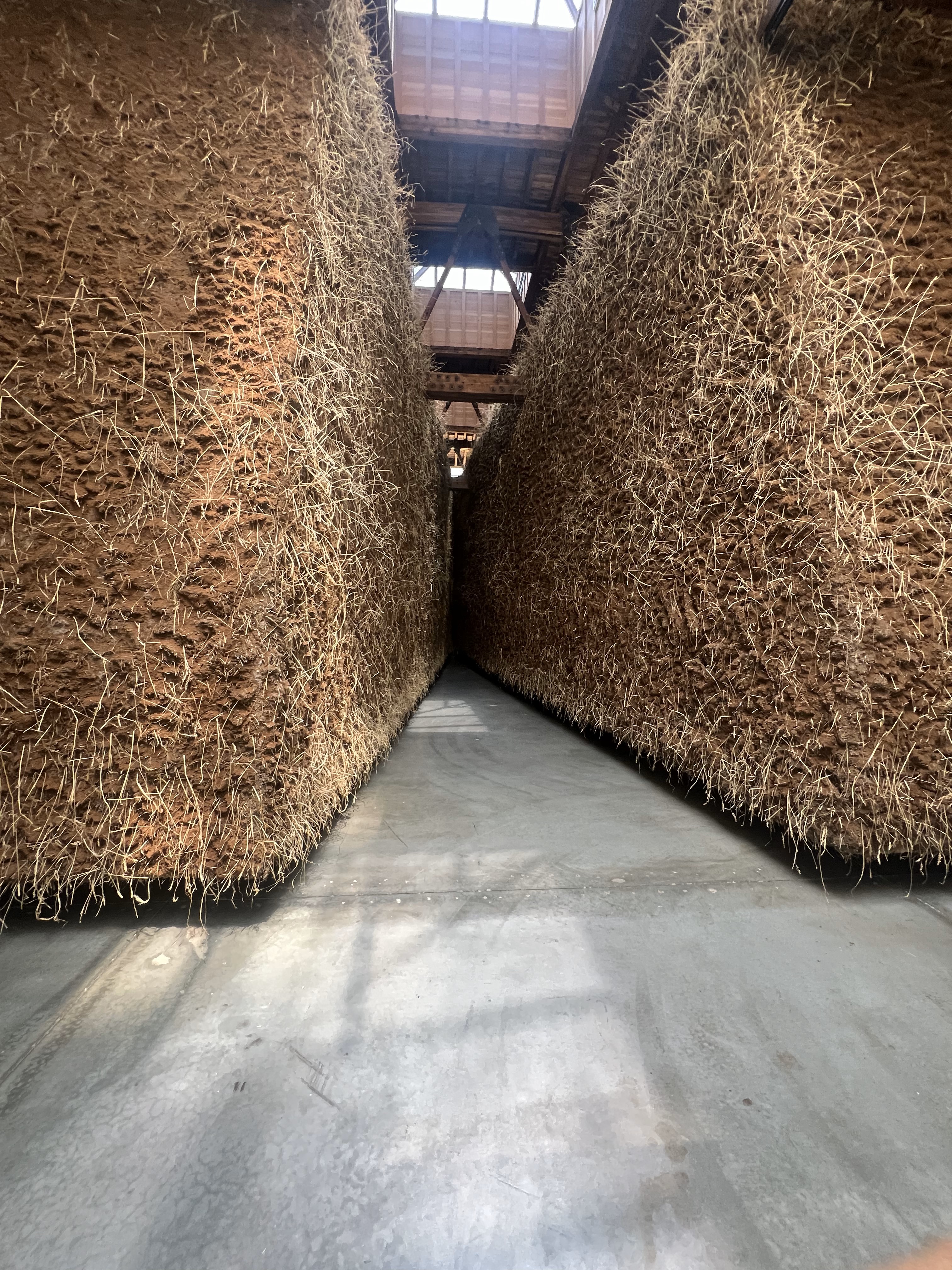Romantic Turns
Delcy Morelos at Dia Chelsea
October 5, 2023 – July 20, 2024
A muddy, gargantuan presentation of earth, clay, industrial detritus, scent extracts, and hay make up the two, room-filling installations in “Delcy Morelos: El abrazo.” Through Morelos’s soil-based practice, Dia is transformed into a terrestrial realm where earth overpowers the human viewer. Morelos announces a return to nature, imbuing minimalism with a romantic gesture that transfigures into something more akin to a landscape or the picturesque.

Initially both installations in “El abrazo” present as meetings with nature within the concrete and steel artifice of Dia’s lofted galleries. Per the title, Cielo terrenal, the first room brings the heavens down to the earth. The gallery’s skylights are covered by dark shades that dim the only light source. Light creeps along a mud-matrix where Morelos has placed detritus along the plane, some post-industrial waste and arrangements of small, enigmatic ceramic objects, grouped in little swarms, reminiscent of clay works by Anna Maria Maiolino. It appears like an archeological excavation, as objects emerge from the dirt, revealing their non-natural status. It’s easy, while occupying the space to understand this reordering of the industrial and mundane materials of minimalism as an excavation. It demonstrates what minimalist and postminimalist art might look like, unearthed after millennia: Minimalism as our sacred antiquity.

In the next room, visitors are greeted by the exhibition’s namesake El abrazo, where they are encouraged to touch and be embraced by a dirt mound that is seemingly suspended between Dia’s timber rafters and the concrete floor. El abrazo follows Cielo terrenal as a poem and a vortex, pulling the viewer’s body around the mound and into a sharp triangular cutout, carved into the back of the structure. El abrazo, that is, the work’s embrace, is this drive into the sharp, narrow corner created in the cut where the viewer is taken into the work itself. While the incision converges into an acute angle, the warmth of the packed dirt and grass draw the body into the earth ship’s grasp.
Historically, minimalist and postminimalist artists paid special attention to corners. Think of Dan Flavin’s illuminated interstices and Robert Morris’ painted plywood untitled corner piece. In the El abrazo mound, the body becomes a positive plug with the potential to fill El abrazo’s berth. Sound carries around the mound and then is muffled and absorbed into the cutout. All sensation leads and is drawn into the corner. In its immensity, El abrazo engorges the space, rather than highlighting its contingent, controlling dimensions.
In Cielo terrenal, the corner is a dark, dense, and inaccessible abyss. Unlike in El abrazo, where viewers are encouraged to touch and to enter the installation, patrons are not allowed to tread on the dirt and thereby disturb the ordered mud plane. In order to go “inside” the work and reach the deepest designated vantage point, visitors must walk a precise foot path, carved out in sharp angles and lines on the ground. Then, at the end of the path, one might find oneself peering and peering into the corner, trying to find way into this space, gazing into the void. At this juncture, one is transformed into a rückenfigur — an artistic device where a figure is rendered only from the back, creating a proxy for the viewer — to those who are entering the space after, and who may be unsure of how to approach the work. Viewers who have not taken the path yet have their perspective doubled, they are both spectators of the installation and of the adventurous soul who has ventured to the end of the prescribed path. In this case, the closed corner invokes something akin to the sublime, harnessing the romanticism embedded in Morelos’s work. Minimalism’s classical insistence on gestalt and legibility is supplanted by a gesture beyond immediacy. Morelos does not do away with the urge to want to see into the corner, to highlight it in the way that many minimalist artists underscored. She does, however, return the corner to its enigmatic state, where the corner reclaims its essence as a haunting, unknowable place. Let the future crumble — like the packed dirt and hay one brushes in El Abrazo — unearthing history’s sacred monuments.